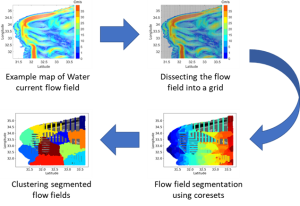An Efficient Drifters Deployment Strategy to Evaluate Water Current Velocity Fields
Murad Tukan, Eli Biton - Department od Computer Science
Roee Diamant - Department of Marine Technologies
Data mining
Computer vision
Marine Science
Seed Grant 2022
Water current prediction is essential for understanding ecosystems, and to shed light on the role of the ocean in the global climate context. Current methodologies vary from physical modeling, long-term observations, to short-term measurements. In this paper, we consider a common approach that uses Lagrangian drifters or floaters for water current prediction, where the trajectory of the elements is interpolated to reflect the velocity field. Here, an important aspect that has not been addressed before is where to initially deploy the drifting elements such that the acquired velocity field would efficiently represent the water current.

To that end, we use a clustering approach that relies on a physical model of the velocity field. Our method segments the modeled map and determines the deployment locations as those that will lead the floaters to visit the corresponding coresets of the different segments.
This way, we make sure the coverage area by the floaters will capture the in-homogeneously in the velocity field. Exploration over a dataset of velocity field maps that span over a year demonstrates the applicability of our approach, and show a considerable improvement over the common approach of uniformly randomly choosing the initial deployment sites.
For more details, we refer the reader to https://arxiv.org/abs/2301.04216.

